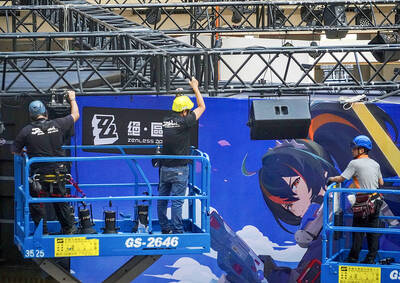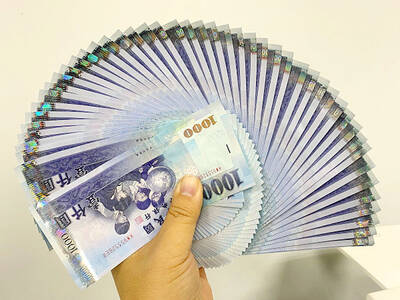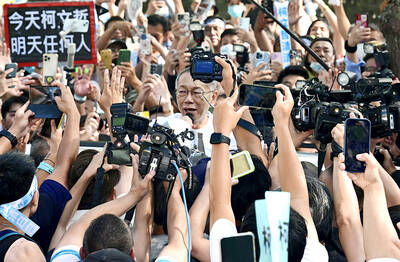It’s been a good year for touch screens.
The launch of the first iPhone model a year ago boosted interest in the technology tremendously and the updated model made available last Friday will likely stoke enthusiasm further. Now touch-screen manufacturers are going flat out, and more devices will soon be controlled by the tip of your finger.
“After the iPhone came out, a lot of mobile-phone companies said: ‘Oh, I can make that kind of touch-screen mobile phone, too,”’ said Jennifer Colegrove, an analyst at iSuppli Corp.
In the US, Sprint Nextel Corp just introduced a touch-screen phone, the Samsung Instinct, that’s very reminiscent of the iPhone.
Verizon Wireless this year introduced its first two phones that use touch screens as their main interface. Research In Motion Ltd is believed to be making a touch-screen version of the BlackBerry. Sony Ericsson is bringing out its first touch-screen model in a few months.
Jon Mulder, product marketing manager for Sony Ericsson’s US arm, said touch screens have become a “hygiene factor” — a must-have for phones that want to compete in the high end of the US market.
Colegrove projects that 341 million touch screens would be shipped worldwide this year, up from 218 million last year and 81 million in 2006.
In the first half of last year, before Apple Inc’s iPhone launch, a big maker of touch sensors for portable electronics would make perhaps 1 million units per month, Colegrove said.
“Then in the second half of 2007, suddenly they received huge orders, so they ramped up their production to maybe 3 or 4 million units per month,” she said.
Apart from the iPhone, demand for touch screens is driven by new phones in Asia that allow the user to write Chinese or Japanese characters on the screen, usually with the aid of a stylus. That’s much easier than entering those characters with a keypad, Colegrove said.
Most touch sensors are made in Japan, Taiwan and China by companies that are relatively unknown in the US, like Nissha Printing Co, Wintek Corp (勝華) and Truly Semiconductors Ltd.
Balda AG of Germany supplied the touch sensor for the first iPhone through a joint venture with a Chinese company.
In the US, major players in the touch field are 3M Co, though it mainly supplies larger screens for ATMs and monitors rather than portable electronics, and Synaptics Inc, which supplies components for Apple. Others, like Cypress Semiconductor Corp, make the chips that control the sensors.
Synaptics has a growing business supplying touch sensors for cellphones as well. The firm uses a particular type of touch sensor known as “projected capacitive.” Before the iPhone came along, Synaptics was struggling to convince manufacturers that the technology was better than the cheaper “resistive” screens.
“The technology was there to use years before the iPhone,” said Andrew Hsu, Synaptics’ touch-screen expert.
Capacitive sensors are more durable, interfere less with the screen’s image and can sense the touch of more than one finger at a time — allowing for the iPhone’s signature “multitouch” ability.
They cost about US$20 for an iPhone-size sensor, compared with about US$5 for a resistive screen.
Frustrated with the lack of interest, Synaptics put together its own concept phone — the Onyx — in 2006 to demonstrate the capabilities of the touch screen, including multitouch input. LG of Korea then used Synaptics’ touch sensor in its Prada phone, which came out some months before the iPhone. But it was Apple that broke the barriers, Hsu said.
“The best showcase of this technology has been the introduction of a production model that works very well,” he said.
Colegrove expects projected capacitive sensors to be among the fastest-growing technologies, with more than 35 million units shipped this year, mainly for the iPhone and iPod Touch. That’s up from 10 million units last year and only a handful in 2006. But the more conventional resistive type will continue to make up most of the volume, especially since they’re better suited to stylus input for the Asian market.
The touch-screen craze is spreading beyond cellphones as well.
Microsoft Corp chairman Bill Gates has said touch sensors and speech recognition are a focus of the company’s development efforts.

Taiwan is projected to lose a working-age population of about 6.67 million people in two waves of retirement in the coming years, as the nation confronts accelerating demographic decline and a shortage of younger workers to take their place, the Ministry of the Interior said. Taiwan experienced its largest baby boom between 1958 and 1966, when the population grew by 3.78 million, followed by a second surge of 2.89 million between 1976 and 1982, ministry data showed. In 2023, the first of those baby boom generations — those born in the late 1950s and early 1960s — began to enter retirement, triggering

ECONOMIC BOOST: Should the more than 23 million people eligible for the NT$10,000 handouts spend them the same way as in 2023, GDP could rise 0.5 percent, an official said Universal cash handouts of NT$10,000 (US$330) are to be disbursed late next month at the earliest — including to permanent residents and foreign residents married to Taiwanese — pending legislative approval, the Ministry of Finance said yesterday. The Executive Yuan yesterday approved the Special Act for Strengthening Economic, Social and National Security Resilience in Response to International Circumstances (因應國際情勢強化經濟社會及民生國安韌性特別條例). The NT$550 billion special budget includes NT$236 billion for the cash handouts, plus an additional NT$20 billion set aside as reserve funds, expected to be used to support industries. Handouts might begin one month after the bill is promulgated and would be completed within

The National Development Council (NDC) yesterday unveiled details of new regulations that ease restrictions on foreigners working or living in Taiwan, as part of a bid to attract skilled workers from abroad. The regulations, which could go into effect in the first quarter of next year, stem from amendments to the Act for the Recruitment and Employment of Foreign Professionals (外國專業人才延攬及僱用法) passed by lawmakers on Aug. 29. Students categorized as “overseas compatriots” would be allowed to stay and work in Taiwan in the two years after their graduation without obtaining additional permits, doing away with the evaluation process that is currently required,

RELEASED: Ko emerged from a courthouse before about 700 supporters, describing his year in custody as a period of ‘suffering’ and vowed to ‘not surrender’ Former Taiwan People’s Party (TPP) chairman Ko Wen-je (柯文哲) was released on NT$70 million (US$2.29 million) bail yesterday, bringing an end to his year-long incommunicado detention as he awaits trial on corruption charges. Under the conditions set by the Taipei District Court on Friday, Ko must remain at a registered address, wear a GPS-enabled ankle monitor and is prohibited from leaving the country. He is also barred from contacting codefendants or witnesses. After Ko’s wife, Peggy Chen (陳佩琪), posted bail, Ko was transported from the Taipei Detention Center to the Taipei District Court at 12:20pm, where he was fitted with the tracking